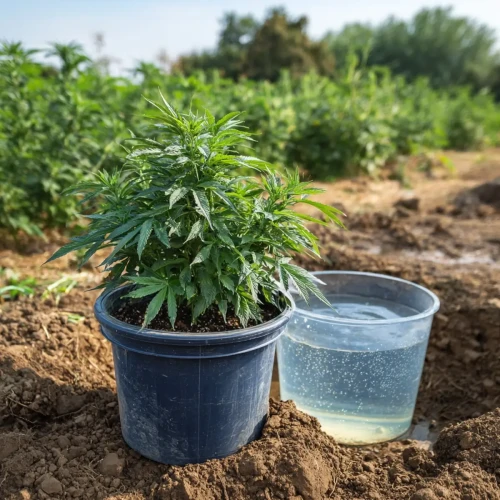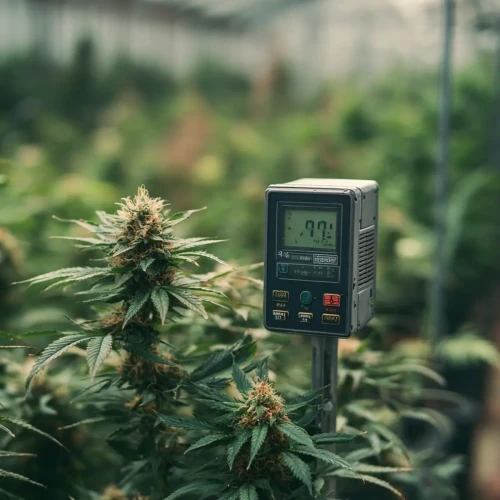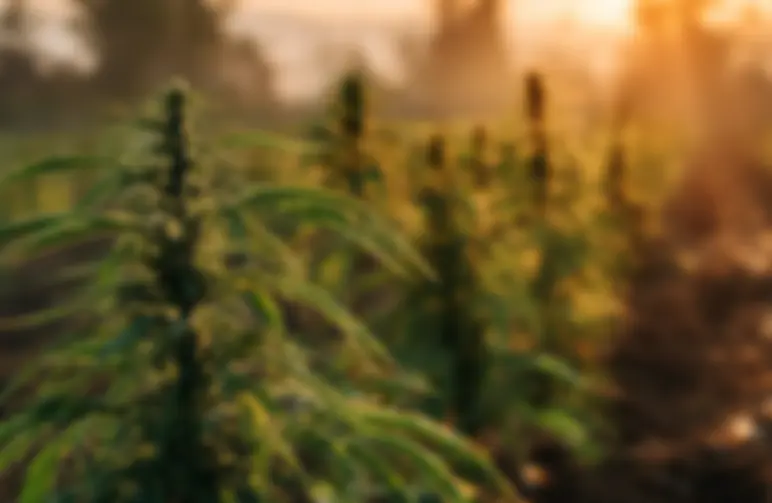As cannabis laws change all over the world, more and more people are getting into the business of growing it, from small-scale backyard growers to large-scale commercial operators. But as the cannabis industry grows, it's important to think about how this growth will affect the environment. A recent narrative review by Zheng et al., published in the Journal of Cannabis Research, examines this topic. The study examines critical environmental factors, including water usage, air quality, energy consumption, carbon emissions, and soil degradation, providing both a cautionary message and a pathway for sustainable cannabis cultivation.
Water Use and Pollution: Cannabis as a Crop That Needs a Lot of Water
Growing cannabis takes a lot of water. The study says that during the busiest growing season, cannabis plants can need up to six gallons of water per plant every day. For comparison, maize and wheat usually need less than half that much. Even wine grapes, which are often thought to need a lot of water, only need half as much as cannabis does each day.
In areas that are prone to drought, this high demand for water becomes even more of a problem. In California and other places, taking surface water away from streams to water cannabis fields has had a big effect on those streams. This, in turn, puts aquatic ecosystems at risk, especially endangered salmon and sensitive amphibians like the California red-legged frog.
Nutrient runoff makes the problem worse. A lot of farmers use chemical fertilizers and pesticides that wash into nearby bodies of water, causing eutrophication and making drinking water unsafe. The authors recommend using precise irrigation systems and responsible nutrient management to lower these risks.


Air Quality Issues: BVOCs and Fertilizer Emissions
Using fertilizer also makes the air quality worse. Ammonia volatilization from nitrogen-based fertilizers can create fine particulate matter, which makes air pollution worse in the area. If emissions aren't controlled through ventilation, filtration, and smarter fertilizer use, these factors make cannabis farming a major cause of localized atmospheric degradation.
The Cost of Growing Indoors: Energy Use and Carbon Footprint
A big part of this big carbon footprint is because we rely on electricity grids that run on fossil fuels. The paper says that using natural light when possible, switching to renewable energy, and adding energy-efficient equipment to buildings can all help cut down on greenhouse gas emissions.
When you grow plants outside, especially in mountainous or forested areas, you often have to clear the land, which can cause soil erosion. When cannabis farms are on steep hills, rain can wash away the topsoil, which hurts both the farmland and the ecosystems nearby. This is a big problem in places like Northern California's Emerald Triangle, which are important for the environment.
But not everything is bad news. Cannabis also looks like it could be a good plant for phytoremediation, which means it can take up heavy metals and toxins from soil that has been polluted. The study says that cannabis can take in metals like lead and cadmium, which means that it could be used to clean up polluted land if it is handled properly.
Suggestions for Sustainable Farming
As legalization spreads and businesses grow, the need for sustainable farming methods has never been more urgent. According to Zheng et al.'s review, here are some important ways to protect the environment:
- Use precise irrigation: To cut down on water use and runoff, use drip systems and soil moisture sensors.
- Use renewable energy instead of fossil fuels: Using solar, wind, and hydroelectric power can greatly lower the amount of pollution from indoor grows.
- Limit the use of chemicals: Use organic fertilizers and integrated pest management (IPM) methods to cut down on pollution.
- Protect native plants: Don't clear land that is steep or has trees on it, and use erosion control methods like terracing or cover crops.
- Keep an eye on emissions: Put in carbon filters in indoor grow operations and check the air quality on a regular basis.
- The Path Forward: Policy and Lifecycle Analysis
The study underscores the significance of lifecycle assessment (LCA), a methodology that evaluates environmental impacts from seed to sale. Using LCA, stakeholders can find areas where emissions or resource use are high and make decisions based on data to lower them. Policymakers can also use these ideas to set limits on the amount of water, emissions, and land that cannabis businesses can use.
Consumer awareness is important in addition to rules. Like organic food or coffee that comes from a sustainable source, eco-friendly cannabis branding could help change what people want to buy toward greener practices. It might not be long before "sustainable cannabis" certifications are as common as USDA Organic labels. Conclusion: Cannabis and Taking Care of the Environment
The cannabis business is at a turning point. It has big economic and health benefits on the other hand. On the other hand, it could hurt the environment in ways that are similar to the mistakes made by other large-scale farming systems if they are not taken into account.
The review by Zheng et al. is a call to action. Growing cannabis sustainably isn't just about making it look good; it's also important for protecting biodiversity, saving water, and reducing the effects of climate change. It's no longer up to you whether or not to use environmentally friendly methods if you're a grower, a policymaker, or a conscious consumer. It's the only way to go.
For more information about the results and methods, please visit this link.You can read the whole study here.





